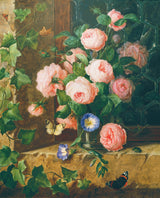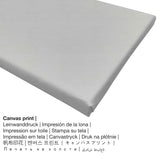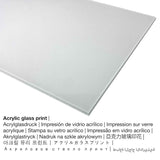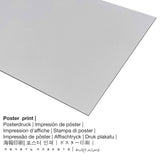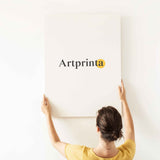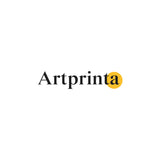Josef Lauer, 1839 - Blumenstillleben - fine art print
Tax included. Shipping calculated at checkout.
(© - by Belvedere - www.belvedere.at)
The magnificent flower and fruit bouquets that have arisen in the early 19th century in the imperial city Vienna, can not be described as a Viennese invention. It is rather a question of picking up a run in the Dutch painting of the 17th and 18th centuries in top form image type. The Viennese artist knew many of these works from the collections of the Austrian nobility, the Academy Gallery and the Imperial Picture Gallery. Of these magnificent arrangements finally the thoughtlessness was taken in the selection of flowers and fruits, which took place mostly after color and formal criteria, but rarely reflect reality because many of the united in the painting plant never find each other in reality as they different times bloom. Crucial to this visual and colored "Fireworks" the taste of the buyer, as well as its tendency to decorative was. As the basis for an optimal combination therefore study leaves were used by flowers that were present both in the flower painting school of the Imperial Academy of Fine Arts as well as in the various greenhouses. In conjunction with ornate vases, goblets or small sculptures, behind catch of landscape views or important paintings of the past, these representations evolved eventually imaginative structures that met the needs of the customer for representation. They were regarded as jewels, as an ornament of the salon. The Viennese humor in these paintings is reflected in the rich colors and an almost tactile, sensuous presence of the subject. In this richly varied variety of still life, the works of Josef Lauer take from almost simple. Lauer did not try the viewer's eye through a form and color noise to hide, because he built his bouquets on only a few individual elements. It is also just about a bunch of wild roses, which has been joined by a winch. The flowers were placed in a large glass and parked in a stone window niche without a formative hand would have taken a closer look it. The chance to be decisive here. For this, the Rosenzweig carelessly lying at the foot of the glass speak as well as on all sides down tending flowers. So it was not the optimal presentation of plants, which sought the artist here, but the reference to their naturalness. However, for lurking this naturalness also had in turn limits, because as far as the slightly older colleague Ferdinand Georg Waldmüller (1793-1865), of the roses has held in its various stages of bloom up to the state of withering in the picture, he still was not able to walk. In addition, a certain urge to elaborate figures makes itself in the present illustration noticeable is like to see the course of the creeping ivy, or even in the lighting, which specifically emphasizes one or another detail. The leaves and flowers but refer to a detailed study of the nature, the exact reproduction of what is seen is particularly evident in the detailed drawing of red rows of prongs on the rose branches to buds. This accurate representation of natural forms is based on meticulous studies that the artist already operated as a student at the Vienna Academy and a life has continued for. A remarkable feature of the still lifes by Josef Lauer is also the inclusion of birds and insects in his pictures. So also this bouquet buzz around ever so slightly more butterflies, as an admiral and a cabbage white at the bottom. Top left you see a burnet, also called blood droplets, and in the center of the image rests a male Bluebird with half the collapsed wings on a rose petal. The green iridescent beetle on flat stone is a rose beetle which probably nibble of the fallen to the ground Rose pollen. [Grabner 2010]
Specifications of the artwork, which has the title "Blumenstillleben"
In 1839 the painter Josef Lauer painted the 19th century work of art. The original was painted with the size: 52,5 x 45 cm - frame dimensions: 65 x 54 x 7 cm and was manufactured on the medium oil on canvas. The artwork's inscription is - "signed and dated lower right: Jos: Lauer 1839". It forms part of the Belvedere's digital collection located in Vienna, Austria. We are pleased to state that the public domain masterpiece is supplied with courtesy of © Belvedere, Vienna, inventory number: 8045. Additionally, the work of art has the creditline: transfer from the Kunsthistorisches Museum, Vienna in 1987. Furthermore, alignment is in portrait format with an image ratio of 1 : 1.2, which implies that the length is 20% shorter than the width. Josef Lauer was a male painter, whose artistic style can be classified as Realism. The European painter was born in the year 1818 in Vienna, Vienna state, Austria and died at the age of 63 in 1881 in Vienna.
Selectable materials
For every product we offer a range of different materials and sizes. You can choose among the following product customization options:
- Aluminium dibond print: This is a metal print made on aluminium dibond material with a true depth. The colors of the print are luminous, fine details are crisp and clear.
- Acrylic glass print: A glossy acrylic glass print, often labelled as a plexiglass print, will turn the original artwork into décor. Beyond that, the acrylic print forms a distinct alternative option to aluminium and canvas art prints. The artwork is being made with the help of modern UV print machines. This creates deep and rich colors. The major upside of an acrylic glass print is that sharp contrasts as well as granular image details will be more visible with the help of the fine gradation of the print. The real glass coating protects your selected art print against sunlight and heat for many years to come.
- Printed poster (canvas material): The Artprinta poster is a printed canvas with a slight texture on the surface. It is ideally suited for framing your fine art print in a personal frame. Please note, that depending on the size of the poster print we add a white margin of around 2-6cm round about the print motif to facilitate the framing with your custom frame.
- Canvas print: The canvas print, not to be confused with a painting on a canvas, is an image applied on a cotton canvas. What is more, canvas generates a soft, pleasing appearance. Canvas prints are relatively low in weight, which implies that it is easy and straightforward to hang your Canvas print without additional wall-mounts. Canvas prints are suitable for any kind of wall.
About the painter
| Artist name: | Josef Lauer |
| Other artist names: | Laur Josef, josef lauer, joseph lauer, lauer josef, lauer joseph, lauer, Lauer Josef |
| Gender of the artist: | male |
| Nationality: | Austrian |
| Professions: | painter |
| Country of origin: | Austria |
| Artist classification: | modern artist |
| Styles of the artist: | Realism |
| Lifetime: | 63 years |
| Born in the year: | 1818 |
| Born in (place): | Vienna, Vienna state, Austria |
| Died: | 1881 |
| Place of death: | Vienna |
Details on the unique piece of art
| Artwork name: | "Blumenstillleben" |
| Categorization of the work of art: | painting |
| Broad category: | modern art |
| Century: | 19th century |
| Created in: | 1839 |
| Age of artwork: | more than 180 years old |
| Artwork original medium: | oil on canvas |
| Dimensions of the original artwork: | 52,5 x 45 cm - frame dimensions: 65 x 54 x 7 cm |
| Original artpiece inscription: | signed and dated lower right: Jos: Lauer 1839 |
| Museum: | Belvedere |
| Museum location: | Vienna, Austria |
| Museum's webpage: | www.belvedere.at |
| License type: | public domain |
| Courtesy of: | © Belvedere, Vienna, inventory number: 8045 |
| Creditline of artwork: | transfer from the Kunsthistorisches Museum, Vienna in 1987 |
Structured item information
| Article classification: | art print |
| Method of reproduction: | reproduction in digital format |
| Manufacturing process: | UV direct printing (digital print) |
| Manufacturing: | German production |
| Stock type: | on demand |
| Intended usage: | gallery wall, wall décor |
| Alignment: | portrait alignment |
| Side ratio: | (length : width) 1 : 1.2 |
| Aspect ratio implication: | the length is 20% shorter than the width |
| Materials you can choose from: | poster print (canvas paper), canvas print, metal print (aluminium dibond), acrylic glass print (with real glass coating) |
| Canvas on stretcher frame (canvas print) size variants: | 50x60cm - 20x24", 100x120cm - 39x47", 150x180cm - 59x71" |
| Acrylic glass print (with real glass coating) size options: | 50x60cm - 20x24", 100x120cm - 39x47" |
| Poster print (canvas paper) sizes: | 50x60cm - 20x24", 100x120cm - 39x47" |
| Dibond print (alumnium material) size options: | 50x60cm - 20x24", 100x120cm - 39x47" |
| Frame: | no frame |
Disclaimer: We do all that we can to depict the art products as accurately as possible and to demonstrate them visually in our shop. Please bear in mind that the pigments of the print materials and the printing can differ marginally from the representation on your device's monitor. Depending on your screen settings and the quality of the surface, not all color pigments are printed 100% realistically. In view of the fact that the are printed and processed manually, there may also be slight discrepancies in the size and exact position of the motif.
Copyright © | www.artprinta.com (Artprinta)

